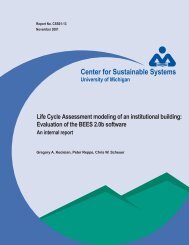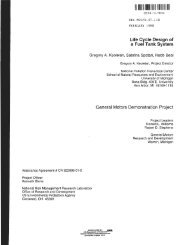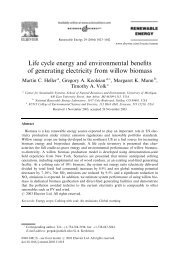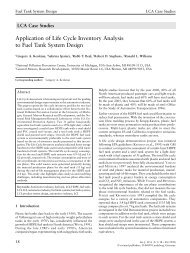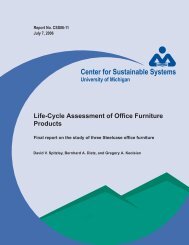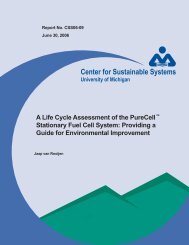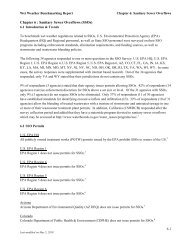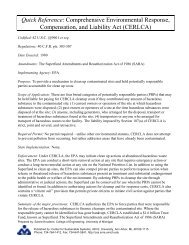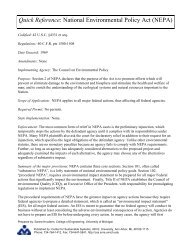Life Cycle Optimization of Residential Air Conditioner Replacement
Life Cycle Optimization of Residential Air Conditioner Replacement
Life Cycle Optimization of Residential Air Conditioner Replacement
You also want an ePaper? Increase the reach of your titles
YUMPU automatically turns print PDFs into web optimized ePapers that Google loves.
chart. Replacing a product with a more efficient one can result in a lower total burden at theend <strong>of</strong> the period. This can be observed when comparing B 1 to B 4 . A key point to consider isthat the relative results from the various paths are dependent on the time period beingconsidered. For instance, one could imagine that if the time period being considered in Figure2.2 were extended, the burden associated with B 2 could surpass the burden <strong>of</strong> B 3 .Figure 2.2: A Schematic Diagram Demonstrating Various Burden Outcomes from ProductUse and <strong>Replacement</strong> (Kim H. C., 2003)The goal <strong>of</strong> life cycle optimization is to determine the best path <strong>of</strong> replacement to minimize theparticular burdens being examined. With the creation <strong>of</strong> dynamic life cycle inventories and theuse <strong>of</strong> dynamic programming algorithms the system life cycle can be optimized by selecting thebest replacement schedule for the system. This approach was initially developed to study thereplacement <strong>of</strong> a mid‐size automobile (Kim, Keoleian, Grande, & Bean, 2003) and later used tostudy the replacement <strong>of</strong> household refrigerators (Kim, Keoleian, & Horie, 2006) and clotheswashers (Bole, 2006).



